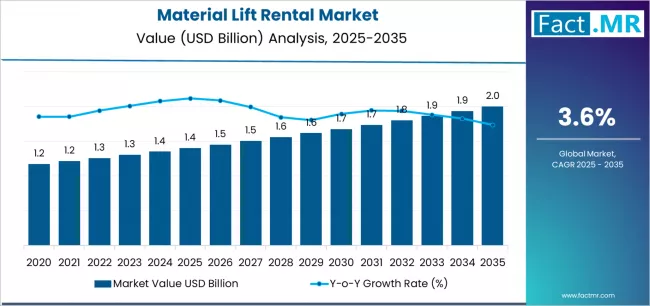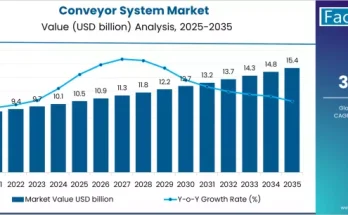Efficient material handling and vertical transportation of goods are critical to modern construction, industrial operations, and warehouse management. Material lifts — specialized equipment designed for safely moving heavy loads across different elevations — have become essential tools for contractors, facility managers, and industrial operators. However, high ownership costs and maintenance requirements often limit access, giving rise to the material lift rental market.
Rental services provide a cost-effective, flexible, and scalable solution for businesses needing temporary or project-based access to material lifts. By renting, organizations can leverage advanced equipment to enhance safety, operational efficiency, and productivity without committing to long-term investments.
Market Overview
The material lift rental market encompasses a broad spectrum of equipment designed for diverse applications. Rental offerings include vertical lifts, scissor lifts, boom lifts, and telehandlers, catering to industries such as construction, warehousing, logistics, and manufacturing.
Rental solutions provide several key advantages:
- Operational Flexibility:Companies can scale lift usage according to project requirements, seasonal peaks, or specific industrial needs.
- Access to Advanced Technology:Rental fleets often include modern lifts with enhanced load capacity, safety features, and automated controls.
- Maintenance-Free Operation:Servicing and repair are typically included in rental agreements, reducing downtime and ensuring reliable operation.
Material lifts are essential for safely transporting heavy or bulky items to elevated positions, improving productivity while minimizing workplace injuries. Modern rental fleets often feature lifts with ergonomic designs, digital control systems, and energy-efficient operations, aligning with evolving industry standards.
Regional Insights
North America represents a mature market for material lift rentals, supported by extensive construction activities, organized industrial operations, and widespread adoption of rental equipment for both short- and long-term projects. The presence of robust rental service networks ensures accessibility and reliability for businesses across the region.
In Europe, safety regulations, sustainability initiatives, and urban infrastructure projects are driving the adoption of rental material lifts. Rental solutions help organizations comply with stringent workplace safety standards while optimizing operational costs.
The Asia-Pacific region is experiencing strong growth, driven by rapid industrialization, urban construction, and warehouse modernization. Countries such as China, India, and Southeast Asian nations are increasingly relying on rental material lifts to support temporary projects, infrastructure development, and commercial expansion.
Meanwhile, Latin America, the Middle East, and Africa are witnessing gradual market development. Investments in industrial facilities, construction projects, and logistics operations are encouraging businesses to adopt rental solutions that provide access to advanced equipment without large capital expenditures.
Key Trends & Forecast
- Rise of Digital Rental Platforms
Technology-enabled booking systems and mobile applications are simplifying access to rental material lifts. Businesses can check availability, compare options, and schedule delivery efficiently. - Emphasis on Safety and Ergonomics
Modern lifts include advanced safety features, such as load sensors, automatic braking systems, and operator-friendly controls. Rental companies are upgrading fleets to comply with safety standards and reduce workplace risks. - Adoption of Energy-Efficient Lifts
Electric and hybrid material lifts are gaining popularity due to their reduced emissions, lower energy consumption, and suitability for indoor applications. - Short-Term and Project-Based Rentals
Flexible rental terms allow companies to use lifts according to project timelines, avoiding idle equipment costs and optimizing resource allocation. - Integration with Construction and Industrial Automation
Smart lift technologies with digital monitoring, remote diagnostics, and IoT-enabled systems are enhancing operational efficiency and predictive maintenance capabilities.
Applications & End-Use Outlook
The material lift rental market serves a diverse range of industries and applications:
- Construction Sites:Lifts are essential for moving building materials, tools, and equipment to different floors or elevated positions, supporting efficient construction workflows.
- Industrial Facilities:Factories and warehouses use rental lifts to manage inventory, transport heavy goods, and support maintenance operations.
- Infrastructure Projects:Bridges, tunnels, and other large-scale infrastructure projects require reliable material lifts for safe and efficient load handling.
- Commercial Spaces:Malls, office buildings, and event venues rely on temporary lifts for installation, maintenance, and renovation projects.
- Public Sector Projects:Municipal operations, such as street lighting, public facility maintenance, and utility management, benefit from material lift rentals for safe vertical access.
By offering scalable and versatile solutions, rental services help organizations maintain high operational efficiency while minimizing investment and maintenance costs.
Competitive Landscape
The material lift rental market is competitive and fragmented, consisting of global rental service providers, regional operators, and local equipment rental companies. Providers differentiate themselves by offering diverse equipment fleets, flexible rental durations, and responsive customer support.
Strategic partnerships with lift manufacturers enable rental companies to offer the latest models with advanced load capacities, safety mechanisms, and energy-efficient designs. Companies with strong logistics capabilities, quick delivery services, and on-site maintenance support gain a competitive edge.
Digitalization is increasingly shaping the competitive landscape, with online booking, fleet monitoring, and IoT-based maintenance tracking becoming key differentiators. Additionally, providers focusing on sustainable and eco-friendly lift solutions are strengthening their market position.
Sustainability and Technological Advancements
Sustainability is becoming a core focus in the material lift rental market. Electric and hybrid lifts reduce energy consumption and emissions, supporting environmentally responsible operations.
Technological advancements, including smart lift monitoring, automated load management, and ergonomic design improvements, enhance efficiency, safety, and operator comfort. Rental providers are increasingly adopting IoT-enabled lifts for real-time monitoring, predictive maintenance, and optimal fleet utilization.
These innovations ensure that rental material lifts contribute to operational productivity while supporting sustainable practices in construction, industrial, and commercial applications.
Conclusion
The material lift rental market is transforming how businesses handle vertical material movement. Renting lifts provides flexibility, cost efficiency, access to advanced equipment, and reliable maintenance — essential in modern construction, industrial, and commercial operations.
As urban development, industrialization, and infrastructure projects continue to expand, rental solutions will remain a critical enabler of operational efficiency and safety. By leveraging advanced technology, sustainability-focused equipment, and digital rental platforms, the material lift rental market is positioned to support businesses in achieving productivity, flexibility, and cost-effectiveness — elevating performance across industries and projects alike.
Browse Full Report – https://www.factmr.com/report/material-lift-rental-market



